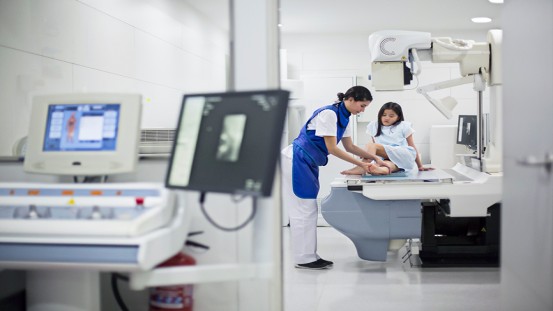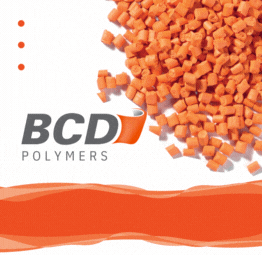According to a market analysis report published by Fortune Business Insights, the global market volume of medical devices and consumables is expected to grow at a CAGR of 5.9% from US$536.12 billion in 2023 to US$799.67 billion by 2030.
The US is the world's leading manufacturing country of medical devices and the world's largest market of medical devices and consumables. In the rankings of the “World's top 10 pharmaceutical companies” and “World's top 10 medical device companies”, the US accounts for the largest share with four and seven companies respectively.
China follows in the second place. China's market of medical devices and consumables is facing both challenges and opportunities with the continuous promotion of centralized VBP (volume-based procurement) and DRG (diagnosis related groups) medical insurance reform. As a result, there is high potential to grow in innovative medical devices and high-value consumables.
Continuous breakthrough in material science and processing technology is crucial to the development of medical device, equipment, consumables and pharmaceutical packaging. Polymers are biocompatible, durable, easy to process and stable in quality, contributing to the user-friendly design and safety of medical products.
Interventional cardiology device is the largest sector of high-value medical consumable, accounting for more than 30% of the market. Mid- to high-end products are mainly manufactured by foreign manufacturers, such as Medtronic, Johnson & Johnson, and Boston Scientific. Meanwhile, the Chinese companies, such as Lepu Medical and MicroPort Scientific, have continued to develop proprietary technologies and gained market share.
The sector mainly includes stents, pacemakers and valves. The main materials of these consumables are nickel-titanium alloy, cobalt-chromium alloy, medical-grade high molecular weight poly(L-lactide-co-caprolactone) (PLCL), and ultra-high molecular weight polyethylene (UHMWPE).
Companies specializing in R&D and manufacturing of PLCL include Evonik, BMG, Nomisma Healthcare and other international companies as well as China's Beijing Advanced Medical Technologies, Shandong Jilu Caprolactone Special Material, Shandong Huaan Biotechnology and eSUNMed Biotechnology.
Among them, Beijing Advanced Medical Technologies cooperates with Department of Material Science of Fudan University to develop PLCL 95/5 polymer. The Chinese company also teams up with Beijing Anzhen Hospital and Beijing Jishuitan Hospital to conduct research on the new generation of absorbable PLCL coronary stents.
The high-end UHMWPE fiber product market is dominated by companies including DSM, Honeywell, and Toyobo. For example, Honeywell's Spectra® MG medical grade fibers are made of UHMWPE fiber with a patented gel spinning production process.
UHMWPE manufactured by Chinese companies are mainly mid- to low-end products. There are 20 major manufacturers, such as Zhejiang Qianxilong Special Fiber, Beijing Tongyizhong New Material Technology, Jiangxi Jiujiang Zhongke Xinxing New Material, etc.
In addition to interventional cardiology device, orthopedic device has also become a fast-growing segment of medical device applications in recent years. The high age-related incidence of orthopedic diseases is the major contributor, resulting in the increased demand for orthopedic device in elderly population.
The global orthopedic device market is dominated by multinational companies, such as Stryker, DePuy Synthes, Zimmer Biomet and Medtronic. Chinese orthopedic device manufacturers are represented by Weigao, MicroPort Scientific, Chunlizhengda, Double Medical, AK Medical, Sanyou and Kinetic.
As one of the largest segments in the medical device industry, the orthopedic device segment consists of two parts: orthopedic implantable devices and specialized surgical instruments, with the former account for 90%. Orthopedic implantable devices mainly include craniofacial and maxillofacial implants, spinal fusion interbody cages, joint implants, fixation plates, and screws. Apart from titanium alloy and stainless steel, commonly used materials are Polyether ether ketone (PEEK), polyurethane (PU) and polymethyl methacrylate (PMMA), etc.
Complying with the clinical standards, these implantable materials cannot be rejected by the human body and do not produce harmful matters. Meanwhile, these materials must be able to produce optimal structures at an affordable price.
The stiffness of PEEK closely matches with human bone and the polymer has the properties of radiolucency and reduced stress shielding. As such, PEEK has high market potential in medical applications and is mainly used in the manufacture of spinal and joint implants.
Curiteva, US-based technology and manufacturing company has developed a spinal implant made of Evonik VESTAKEEP® i4 3DF PEEK filament biomaterial. The 3D-printed implant received clearance from the FDA and it is the first such device for commercial use.
The PEEK spinal cage implant developed by Bond3D in the Netherlands is translucent under X-ray or CT scans. It allows bone ingrowth, provides a secure fit and can reduce production cycle.
Tangdu Hospital of Air Force Medical University in China created skull, sternal and rib implants with PEEK, using INTAMSYS’ 3D printing equipment.
Like orthopedic devices, drug delivery devices are growing rapidly. Allied Market Research forecasts the market of global drug delivery systems to grow at a CAGR of 16%, achieving a market volume of approximately US$195.1 billion by 2030.
Drug delivery devices are mainly used to protect drugs from environmental contamination to ensure safe implementation of drugs. The main product types include implantable, mucosal, injecting devices, etc.
Medtronic has introduced an infusion set for insulin infusion that can be worn for up to seven days for patients with diabetes, while infusion sets on the market typically need to be replaced every two to three days. Medtronic says that the infusion set can save up to 25% of insulin costs and reduce plastic waste by up to 50% on a yearly basis.
SCHOTT Pharma uses advanced cyclic olefin copolymer (COC) to make prefilled syringes (PFS) that can be stored at ultra-low temperature of -100°C. The syringes are fracture-resistant, biologically inert and of superior barrier property to ensure drug stability.
Beijing QS Medical Technology has optimized the design of its insulin needle-free syringes with Covestro's environmental friendly, flame-retardant polycarbonate and acrylonitrile-butadiene-styrene copolymer blend (PC+ABS), which not only ensures an aesthetically pleasing design, but also makes the product structure more robust and reliable.
Elkem's Silbione™ series of medical silicone rubber materials and Polyplastics' medical-grade polyoxymethylene (POM) can be used to make drug delivery systems.
In addition to the above-mentioned medical devices and consumables, soft and rigid endoscopes, CT, MRI, ultrasound, ventilators, anesthesia machines, hemodialysis machines, and other medical equipment have become development focus for the medical plastics industry in recent years.
Röchling has developed POM, PEEK, Polyethylenimine (PEI) and glass-filled nylon (PA+GF) materials that can be used to manufacture ventilator shells, valves, switches, guide rails, sockets, adapters, cylinders, clamps and other components.
Besides, Röhm’s high-performance Cyrolite® acrylics, which are ultra-high transparency and excellent sterilization resistance, are easy to be processed into precision parts. They can be used for dialysis equipment and other medical devices and consumables in contact with blood, vitro diagnostics, surgical lighting, as well as a wide range of applications from the intensive care unit to the general operating room and laboratories.
INEOS Styrolution's new acrylonitrile-styrene-acrylate (ASA) polymer "MED" is designed for small medical devices in homes and hospitals. It has excellent chemical resistance, UV resistance and impact strength.
The boom in medical devices and consumables has led to the growth of the medical packaging market. According to Future Marketing Insights, the global medical packaging market is expected to reach US$12.4 billion in revenues in 2023, and it will grow at a CAGR of 6.1% to reach US$20.9 billion by 2033. The medical packaging market in China is expected to reach US$12.7 billion in 2033.
At present, pharmaceutical packaging is developing in four major directions: patient-led demand packaging design, rising demand for plastic bottles and blister packaging, attention to child safety and sustainability.
The plasticization of oral solution bottle packaging is one of the emerging trends in the transformation of pharmaceutical packaging. For example, Berry Global launched a plastic alternative for oral solution bottle packaging. Compared with glass bottles, the plastic bottle not only saves the material costs, but also reduce production costs by eliminating the complex processes required for manufacturing traditional glass bottles, such as bottle blowing, bottle washing and light inspection. Such bottles are easy to transport as well.
Amcor China has launched mono-material recyclable packaging AmPrima™ and transparent sterilization-resistant high-barrier recyclable packaging material AmLite®, which were designed based on recyclability guidelines for flexible packaging.
Medical packaging manufacturer Nelipak uses Eastar Renew 6763, Eastman's recycled copolyester, to manufacture rigid thermoformed sterile barrier packaging.
High-quality manufacturing of medical devices and consumables cannot be achieved without precision processing and molding.
The 32-cavity injection molding machine of Fanuc for producing medical needle tubes has a screw diameter of 48mm, the cycle time is 11.75 seconds; LKIMM’s EL 130 injection molding machine, which is suitable to produce pipette tips, uses non-contact tie bar and has a mold clamping position control accuracy of 0.01mm.
Jwell Machinery’s twin-screw drying-free PET medical packaging material production line can effectively reduce the viscosity of PET resin; Gowin Precision Machinery adopts the pre-filled series of multi-cavity precision molds, which improve the yield of molecular diagnostic kit products.
In addition to molding, the production of medical devices and consumables also includes inspection, testing, packaging, and storage. With the development of Industry 4.0, automation technology has gained wider application in production processes, helping manufacturers to reduce production costs and improve operating efficiency.
Shanghai Mitrassist Medical has realized fully automated industrial production of bioprosthetic valves, which originally required more than 2,000 stitches by hand, lowering the cost of the transcatheter aortic valve replacement (TAVR) system made of high molecular materials from RMB 40,000-50,000 to less than RMB 1,000.
Hunan Vathin Medical Instrument has designed an automated assembly line for endoscopes, enabling annual production capacity of up to 400,000 units while reducing costs by nearly 30%. APON Corporation, based in Jiangsu, has adopted an automated production line for its nasal hygiene products, enabling an annual production capacity of up to 10 million bottles.
Besides, the blood collection needle automated production line introduced by Maider, a specialist in automation equipment in consumables, effectively solves the bottlenecks of complicated components/processes, low efficiency of manual assembly, high risk of contamination, and unstable quality.
Innovation in medical devices, consumables, equipment and pharmaceutical packaging is not only technological progress, but also a positive response to global health concerns. Thanks to their unique material and processing advantages, polymer materials not only improve safety, but also enhance the patient experience and promote the sustainable development of the medical industry. With the continuous iteration in the industry, the future of medical polymer materials and related processing is promising.



